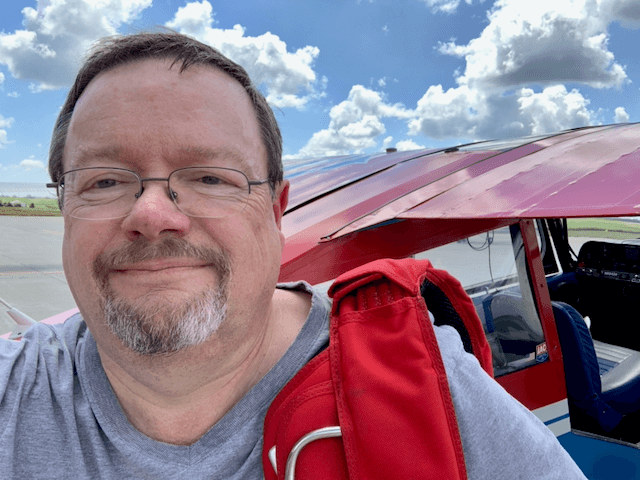There comes a time in the life of some pilots when an opportunity presents itself to buy their own airplane. Normally that first purchase is a used aircraft.
Fair warning: This isn’t an article that details the entire purchase process of an airplane. Instead, consider this a cautionary tale based from personal experience, and experiences of other aircraft owners. Hopefully this will save you time, pain, and money.
Buyer beware: When it comes to purchasing an aircraft, there are many unscrupulous people who will take advantage of you. It begins with the person who’s selling the aircraft. If you hear the words “perfect”, “pristine”, “nothing like it”, “I’m having second thoughts about parting with it”, think twice before buying it. If they say things that play on your emotions in an attempt to increase your desire or urgency to buy it (manipulation), perhaps it’s best to walk away. Remember, there’s a reason for selling the airplane in the first place. You need to discern the truth, if possible.
First, you’ve decided to buy an airplane and know the make and model you want to buy. Second, you’ve searched the Internet and have a general idea about the price, age and instrumentation you’re looking for. Third, do you have hangar space available? If not, you may find yourself on a waiting list for a hangar that could take years to obtain! One airport an hour from me had space in a community hangar for $210 per month, which didn’t fit the budget. There’s no sense buying an airplane without a place to park it. Sadly, the closure of many small airports have helped create the hangar shortage. I once had an opportunity to buy an airplane, but the closest available hangar was two hours away, which stopped the purchase.
The next 800 pound gorilla in the room is insurance. You’ve called and talked to an insurance broker, right? If not, insurance premiums today can halt a purchase after giving you sticker shock. I know a pilot who was quoted a $3,600 per year premium on a $17,000 plane because of his age. That’s right. Age. Insurance premiums have risen the past couple of years as aviation underwriting companies have exited the market.
Don’t forget taxes. In Iowa I’m required to pay 6% of the purchase price of an airplane, regardless of the age of the aircraft. The newer the airplane, the more I have to fork over to the State. So that amount must be factored into the purchase price and overall cost.
So to recap, know what airplane you want along with your budget. Have hangar space and insurance lined up. Also budget a few thousand dollars for unforeseen repairs.

When purchasing an airplane, there are many things to look out for.
1. If you’re serious about buying the airplane, pay to have a pre-buy inspection done by a licensed A&P mechanic, not the seller’s buddy at the airport. A pre-buy inspection costs money, but has the potential of saving you thousands of dollars or more. The purpose is for a professional mechanic to detect any damage or wear that could lead to expensive repairs. The A&P doing the inspection will provide you with a thorough condition report of the plane. The mechanic will normally examine the engine and airframe logbooks to make sure everything is up to date, and legal. It’s important that all AD’s (Airworthiness Directives) and Service Bulletins have been complied with.
2. Whenever possible, fly the airplane! You wouldn’t buy a used car without test driving it, and you certainly don’t want to do that with an airplane either. Distance makes a difference, but you need to see the airplane. You need to hear the engine run, and feel how it handles in flight if possible. You need to observe its condition in person. Photographs are great, but they can be altered.
Ergonomically, can you get in and out of the airplane easily? Do you fit comfortably in the airplane? Is there enough headroom? Do your legs fit okay? These are questions only you can answer. I’ve driven hundreds of miles to look at an airplane I was interested in, only to walk away because something wasn’t right. Sadly I’ve also discovered that on some vintage airplanes, I have too much difficulty getting into and out of them. Go see and fly that airplane!
3. If an owner won’t let you fly the airplane with them on board, walk away. If an owner won’t let you fly the airplane with a pilot qualified in that make and model, walk away. That’s a big red flag, because I begin wondering if they’re hiding something about the airplane.
4. Pay attention to how often the airplane has been flown. Aircraft engines like to run on a regular basis, because that keeps all vital and expensive parts lubricated. Allowing an airplane to sit for months or years is a perfect recipe for rust and corrosion to destroy the engine from the inside out. It doesn’t matter if the engine had a major overhaul 10 years ago if it’s only flown 20 hours in the past 10 years.
Remember, take your time when considering purchasing a used airplane. There’s nothing wrong with walking away…
Matt – aka This Old Pilot
Trust, but verify before buying that airplane.

If the sellers story continues to change, that should produce red flags. It is best to walk away. I have.

